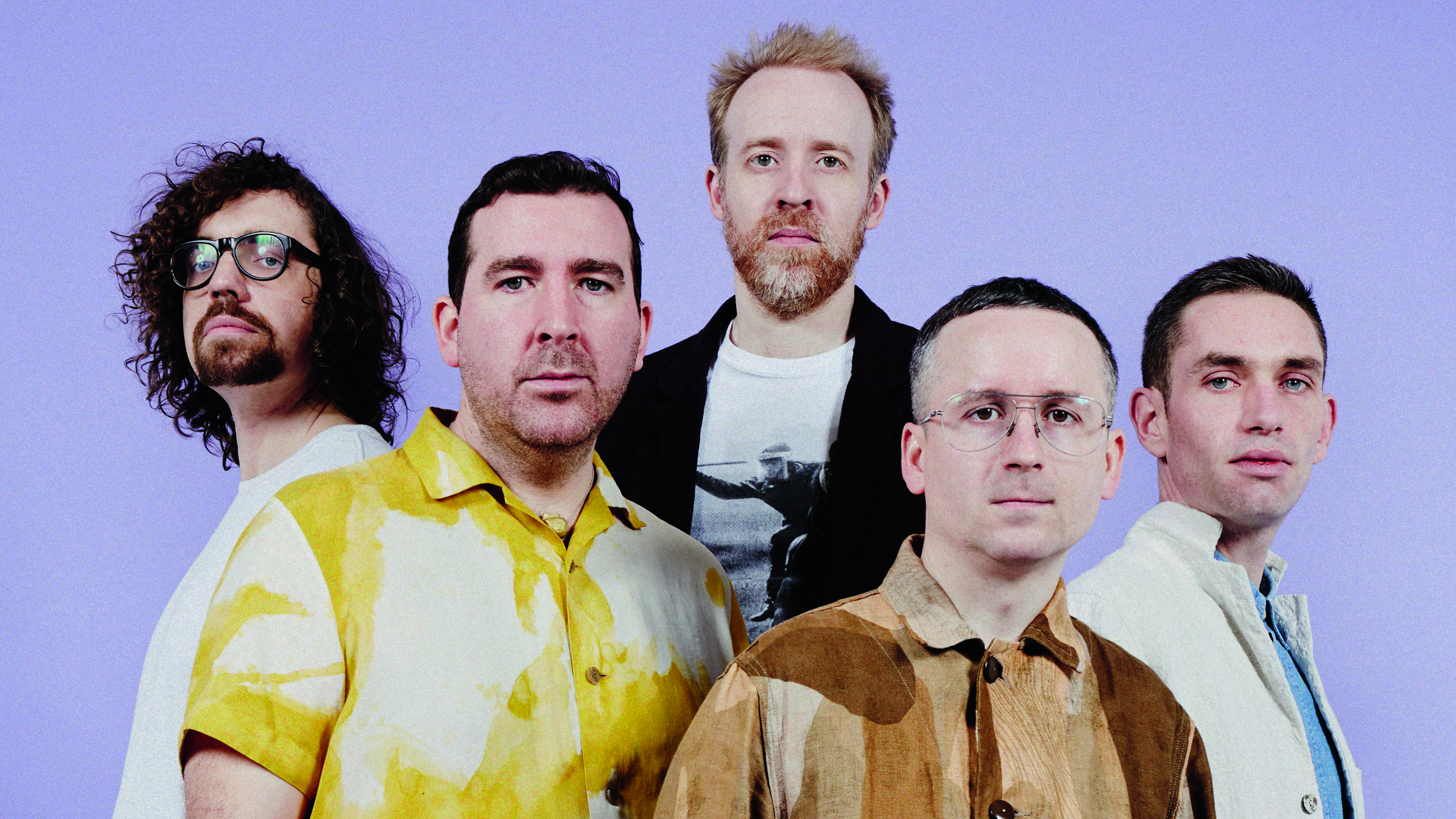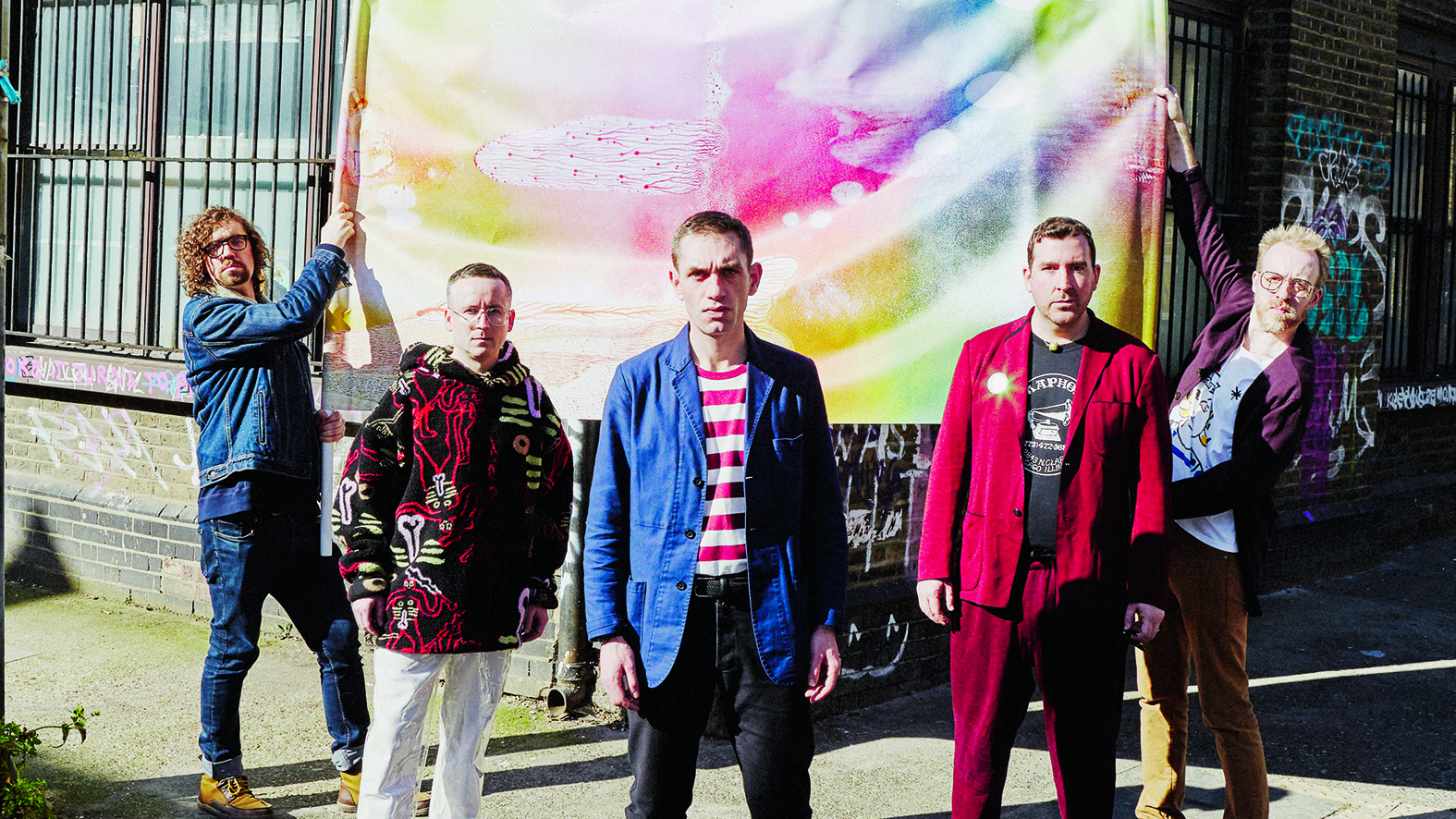15 questions for... Hot Chip: "Sometimes it doesn’t ‘feel’ right and we don’t always know why"
Is it really two decades since Hot Chip first got together? Time for a celebratory album release and for the band to reveal their studio secrets

Yes, it really is a full 20 years since Hot Chip first formed with founder members Alexis Taylor and Joe Goddard. After a few EPs the duo were joined by current regulars Felix Martin, Al Doyle, and Owen Clarke to launch themselves into something of a synth and quirky pop stratosphere.
Their debut album came out in 2004, called Coming on Strong, but it was the band’s follow up, 2006’s The Warning, that bothered the charts, with the singles Boy from School and Over and Over going on to be nominated for the Mercury Music Prize.
Since then they’ve released five further albums including the Grammy-nominated Made in the Dark (2008) and 2019’s critically-acclaimed A Bath Full of Ecstasy.
'The Chip' recently celebrated a couple of decades of success with a brand new album, Late Night Tales: Hot Chip - the latest in the famous series of compilations - which features tracks by Kaitlyn Aurelia Smith and Fever Ray (among others), along with new material from the band themselves.
Alexis Taylor and Felix Martin join us to discuss how much things have changed since the early days of a Dell and Cubase.
1. How did you get into music production?
Alexis: “Just because we liked other people’s music so much, and had started trying to make some of our own, as teenagers. I heard a lot of music that I loved growing up, good records which were inspiring, like Short People by Randy Newman and lots of pop music in the charts, plus older things from the '60s and '70s that my parents liked. Joe Goddard and I bonded over lo-fi Amercian indie music, Aphex Twin, American R’n’B, soul music, reggae etc.”
Get the MusicRadar Newsletter
Want all the hottest music and gear news, reviews, deals, features and more, direct to your inbox? Sign up here.
2. When did you realise you could make a career from music production?
A: “I think it was in 2005 or so? It helped when our first album had nice reviews and we got a bit of a live following, and then when we signed with EMI/DFA that helped us financially to leave our day jobs and do music full-time. I would imagine that doing the same thing now would pretty much be impossible.”
3. What is your musical philosophy?
A: “Experiment, say something meaningful to yourself, try to synthesise sounds and make interesting combinations of sound by blending instruments together.”
4. How does a track typically start structure-wise?
A: “Either with chords and a melody/words, or with a bassline and rhythm track.”
5. How do you know when a track is finished?
A: “We tend to go on feel, and sometimes a track can feel close to finished in a very short session. Sometimes it doesn’t ‘feel’ right and we don’t always know why, but we keep developing and working on it for weeks until it feels better. The best songs seem to come together quickly I would say.”
6. How did you first get into computer music-making?
Felix: “I downloaded Acid Pro by Sonic Foundry on the family home computer around 1999. I couldn’t record anything apart from vocals using the built-in PC microphone so would layer that with drum breaks and other pre-made loops. Then I downloaded Fruity Loops and started making beats and so on.”
7. What are your favourite plugins?
F: “The built-in stuff in Bitwig is great. The reverbs, delays etc are all nice; even the Vocoder is great. Also, I love the Grid which is the sandbox modular environment thing in Bitwig.”
“It’s not so much a plugin but I also like VCV Rack for running Eurorack-style setups in the box. Convenient and open-ended.
“Fab Filter Pro-Q 3 for EQ, I prefer that to any analogue EQ I’ve used. User-focused features and a transparent interface.
“I also use iZotope Ozone for compressing and mastering a whole mix and Celemony Melodyne as both a plugin and standalone creative tool. Each time they update it, it seems to have more and more amazing capabilities.”

8. Talk us through at least one of your production tricks?
A: “Often putting MIDI or a chord pattern through a modular synth can allow the sounds to breathe and change so much that unexpected new rhythms, timbres and arpeggiations can occur, which mean the track takes on a life of its own.
"Playing with rhythm and cross-rhythms and also electronic elements in combination with acoustic percussion can often give a track a bit of a Hot Chip flavour, but we don’t tend to think too consciously about these practices as then they would become formulaic.
"Running these kind of elements through interesting processors such as compressors or pedals which modulate the sound is also a typical thing to do, as well as combining these mostly electronic and synthesiser-based instruments with things like Wurlitzer electric pianos and fairly dry single-tracked vocals.”
9. What else do you have in your studio?
F: “The main part of my studio is three Eurorack cases: an Amalgamod metal case, a Make Noise Shared System and a wooden enclosure which belongs to my bandmate Al Doyle.
"The heart of the system is a Make Noise René 2 sequencer, along with an Intellijel Metropolis. I also use an ACL Sinfonion to quantise CV from multiple sources, to arpeggiate and to sequence chords on an Instruo Troika. Then there’s Pamela’s New Workout for clock division and LFOs and System80 880 (a faithful recreation of TR-808 in Eurorack format).”
10. That’s quite a setup – how is it connected to your computer?
“Everything is synced via an Intellijel uMidi to a MacBook running Bitwig 3. For audio I use an Expert Sleepers ES-9 and ES-8 along with an old Midas Venice U 16-channel desk and a Traktor box, all of which run as an aggregate device.
“I also use a Pioneer DDJ-200 as a DJ controller, using Rekordbox which is synced to Bitwig via Link. This enables me to make mixes in sync with the Eurorack and analogue gear. It is a cheap controller but does everything I need pretty much.”
11. What would be on your wish list, studio gear-wise?
F: “For Eurorack, a Strymon Magneto tape delay and anything by Schippmann or Cwejman. Also the new Korg/ARP 2600 FS.”
12. What would you like to see developed in terms of technology?
F: “I always welcome any device which helps synchronise multiple sequencers and a computer and removes latency when recording and composing. I like unexpected things, too, that I could never have thought of.
"There are so many great developers doing innovative things, especially in the Eurorack world; these companies always have the ability to surprise and inspire with their work.”
13. What advice have you picked up from playing live?
F: “Run a redundant system if you are using a laptop. There are numerous reliable ways to do this nowadays.”
14. And from working in the studio?
F: “Just to back your stuff up all of the time (or automate the process so that you don’t have to remember).”
15. What projects have you got planned for the near future?
F: “Late Night Tales is coming out soon…”
In fact Late Night Tales: Hot Chip is out now via Night Time Stories.


Computer Music magazine is the world’s best selling publication dedicated solely to making great music with your Mac or PC computer. Each issue it brings its lucky readers the best in cutting-edge tutorials, need-to-know, expert software reviews and even all the tools you actually need to make great music today, courtesy of our legendary CM Plugin Suite.
“It was originally called Everybody Wants To Go To War, which I knew didn’t work. When you’re a songwriter who doesn’t like the lyric, the song dies”: How Tears For Fears created an ’80s mega-hit
“I oversaw every element - not just the music and the lyrics and the melodies and the production, but also the merch and the fan clubs and everything”: Mike Portnoy talks about his years away from Dream Theater










